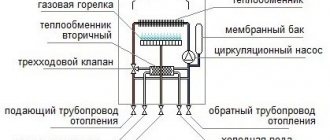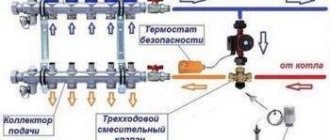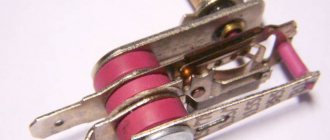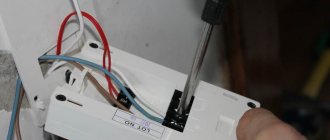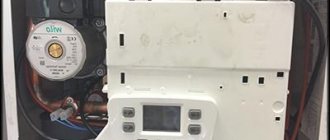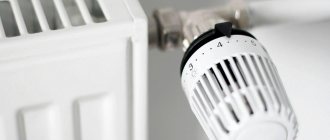What is a "thermostat"
Imagine: you turn on a heater (for example, an oil type or a convector), and it starts working without stopping, heating, heating and heating. Which will ultimately lead to overheating and breakdown (if not short circuit and fire). So, to avoid such situations, a thermostat is built into modern heaters.
It is a small but important device whose mission is to maintain a given temperature regime. And the installation and adjustment of temperature indicators for heating devices is carried out using special regulators. Many people confuse the two concepts “thermostat” and “thermostat” - they are not the same thing, but they are inextricably linked.
Nobo NCU 2R Nobo NCU ER
Operating principle and functionality of the thermostat
The thermostat for an infrared heater allows you to set the temperature value on a constant basis or using a program method. In the second case, you can plan a regimen not only for a day, but even for a certain cycle for several days - usually for a week.
This property of modern thermostats is very useful for use in the heating system of a country house. If the house serves as a summer cottage, and in winter the owners come from time to time and only on weekends, then you can set a certain operating mode. On weekdays, the minimum temperature required for the normal functioning of the heating system will be maintained, and by the weekend the heating will turn on at full power, and the owners will be greeted by a warm home.
Let's look at the types of thermostats in a little more detail.
Mechanical regulators
Temperature regulator
Mechanical regulators have a long service life and operate regardless of the presence of power supply. They are inexpensive, compact, can be used over a wide temperature range and are easy to operate.
There is only one drawback, but a fundamental one - with their help you can only set one temperature value. If you think about savings, a truly “smart home” and maximum comfort, then such a device is not very suitable. The accuracy of temperature setting when using this type of device is about 2 degrees.
Electronic regulators
This type of instrument is more accurate. With their help, you can set the temperature with an accuracy of 0.5 degrees. They allow the connection of remote temperature sensors and are programmable, allowing you to change the room temperature automatically depending on the time of day and day of the week. But such devices can only be used in rooms where positive temperatures are always maintained.
An electronic thermostat for infrared heaters must have non-volatile memory. Then, in the event of a power outage, you will not have to reprogram it, and all the settings made will be restored automatically. This point is fundamentally important for the normal functioning of the heating system.
Types of thermostats for heaters
This equipment usually comes in two versions:
- mechanical, works in tandem with mechanical controls and buttons;
- electronic, functions in conjunction with sensors, sensors and a digital control unit.
The accuracy of maintaining a given temperature parameter varies significantly between these two types. The mechanical model has an error of 1 degree, and the electronic one - 0.1 degree. In addition, a mechanical thermostat is quite noisy: the user hears characteristic clicks, which for many is an irritating factor, especially at night. The disadvantage of electronic models is their vulnerability to voltage surges in the electricity network. The more often a sudden change in voltage is observed, the more likely it is that the thermostat will soon burn out.
About the thermostat device
Depending on the design, all devices can be divided into:
- Mechanical.
- Electronic.
Mechanical
Mechanical thermostat
This is a plastic box slightly larger than a socket. It is equipped with an on/off button. and a wheel with a printed temperature scale.
Some models also have an LED indicating whether the device is currently working. Other manufacturers have equipped their creations with an LCD display on which data is displayed.
The number “20 0C” on the wheel of individual instruments has a bulge - it is not difficult to feel it in the dark or with poor vision.
There are thermostats:
- Mortise (can be “drowned” into the wall).
- Overhead (mounted on the wall).
Such devices do not consume electricity: the operating principle is based on the properties of different materials to react differently to temperature changes.
The degree of heating varies depending on the level of pressure of the contact group. Typically, mechanical thermostats for a heater operate within the range of 5 - 30 0C; if the device is working properly, the error will be from 0.5 to 2 degrees.
Mechanics remains in demand for a number of reasons:
- It is easy to understand the controls even for those who are far from technology;
- A simple design provides reliability and durability;
- The price is lower than electronic ones.
If we talk about maximum comfort, then the mechanical option is not suitable. Only one temperature value can be adjusted on it.
Electronic (programmable)
Electronic thermostat
This is a mini-computer with a screen and a keypad (or touch screen). There are a lot of design options here. The front side can be hidden under a plastic cover.
Many of the thermostats are suitable not only for IR heaters. They are universal and if the owner decides to install, for example, heated floors, there is no need to specifically buy a new device.
The self-monitoring function diagnoses the condition of the regulator and, if it detects a breakdown, switches the device to a reduced activity mode (30%).
An electronic thermostat will provide a full range of programming options. And it can even be controlled remotely using mobile devices.
The owner will be able to turn on the heating when he arrives home and not worry if in a hurry he forgot to turn off the heater.
Which thermostat to choose
You ask: “Which thermostat is better?”, We will answer: “Any!” And all because the choice of device type depends on the operating conditions. That is, if the user does not want to hear periodic annoying sounds when the heater is operating and, at the same time, lives in a city where there is a stable voltage in the network (or in any other locality, having a voltage stabilizer at home), then a device with an electronic thermostat is suitable for him. fits perfectly. In any other case, a mechanical model is also suitable - ultimately it is a matter of choice for each user.
About infrared heaters
Infrared heaters are winning the love of consumers. If we compare them with oil radiators, the “home sun” heats faster, it can be placed under the ceiling, and certain types of radiation are even considered therapeutic!
Infrared heating
In addition, as you know, IR rays heat objects, not air.
This means that having successfully positioned the device, you can go to a warm bed in the evening.
Infrared heaters (ceiling and wall) with a thermostat are perfect for a country house where people do not live, but only visit it on weekends and holidays.
In the absence of the owners, you can set the temperature to 5 0C - just so that the systems do not freeze. When the owners arrive, IR will warm up the house in 15 minutes!
Types and principle of operation of thermostats for IR heaters
The operating principle of infrared heaters is that they heat the surrounding objects rather than the air. These, in turn, begin to emit heat, creating a warm atmosphere in the room. Thanks to this operating scheme, infrared heaters are characterized by high efficiency. They provide quick warm-up and can work in any type of room . It can be:
The main difference between an infrared device is that it heats not the air, but the objects around it.
- living quarters - kitchens, rooms, corridors and much more;
- industrial premises - warehouses and production workshops;
- administrative premises – work rooms and offices;
- utility rooms - sheds, premises for pets and garages.
They are also used for heating outdoor areas - pool areas, children's and sports grounds, terraces, verandas and much more.
When using infrared heaters to heat rooms, it is necessary to ensure temperature control. Otherwise, you can waste electricity, creating a real Tashkent in the room. Simple portable heaters connected to an outlet are equipped with the simplest thermostats or no less simple step-by-step power regulators - in this case you have to monitor the temperature yourself.
As for wall and ceiling infrared heaters, they most often represent separate heating modules without any controls - like a regular lamp that is connected to the network through a regulator or switch. In order to provide temperature control, you must purchase a separate thermostat . After this, all that remains is to connect the device to the infrared heater - this is no more difficult than installing a lamp with a switch.
There are two types of thermostats for infrared heaters:
Simple mechanical devices are reliable in operation, but are not highly accurate.
- mechanical thermostats;
- electronic thermostats.
The main advantage of mechanical thermostats is their extreme simplicity. Their design includes a simple bimetallic element that responds to changes in ambient temperature. As soon as the temperature rises to the set value, the electrical contact opens, stopping the heating element in the infrared heater from operating. Detecting a drop in temperature, the sensor closes the contacts, restoring power to the heating element.
The operating principle of a mechanical thermostat for an IR heater is extremely simple. But you can’t expect accuracy from it - the discrepancy can be several degrees. Most often, there is no graduation in degrees, and the temperature is set approximately, based on a scale with numbers from 0 to 9. Because of this, energy consumption suffers, as a result of which the numbers on electricity bills increase.
Terneo vt is a built-in thermostat for an infrared heater and more
The Terneo vt thermostat is used to control the temperature in the room according to the data from the built-in air temperature sensor. This thermostat is suitable for any heaters, including infrared, ceiling, wall, film, electric convectors, etc. You simply set the desired temperature on the electronic display using two buttons, and the thermostat accurately maintains it at the specified level, while saving energy for heating. The screen displays the temperature and menu navigation.
Features of connecting the thermostat to the heater
We are talking about remote-type models, which can be included in the kit or be purchased separately from the heating device. What is important in this case:
- The heater must be located at least 1.5 m from the floor.
- There must be a layer of insulation under the thermostat so that the readings of the device are not distorted.
- One thermostat should only be used in one room.
- The power of the heater itself and the temperature control device must match each other.



